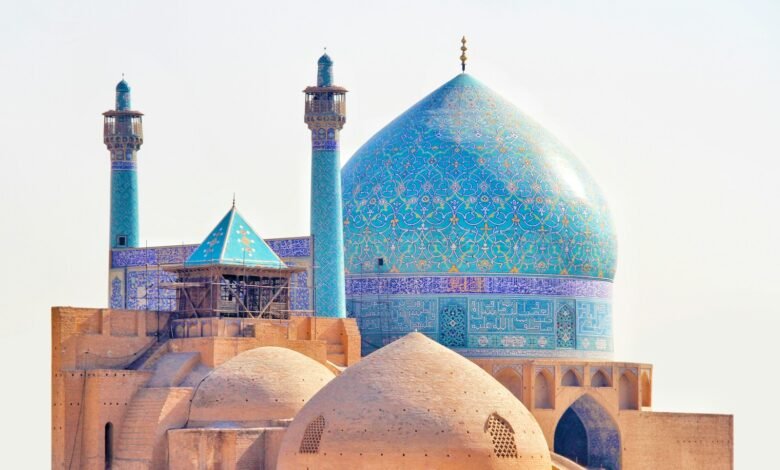Isfahan – The Jewel of Islamic Architecture and Persia’s Cultural Gem

Nestled in the heart of Iran, Isfahan (also spelled Esfahan) is a city that captivates visitors with its breathtaking Islamic architecture, grand boulevards, serene gardens, and bustling bazaars. Known as “Half of the World” (Nesf-e Jahan) by Persian poets, Isfahan has long stood as a symbol of Persian elegance, culture, and architectural mastery.
A Living Museum of Islamic Art
Isfahan flourished during the Safavid dynasty, particularly in the 16th and 17th centuries under Shah Abbas the Great, when it became the capital of Persia. The city’s urban design and monuments from that era represent the golden age of Islamic-Persian architecture.
From blue-tiled domes to symmetrical minarets and intricate mosaics, every corner of the city is a feast for the eyes.
Top Attractions in Isfahan
Naqsh-e Jahan Square (Imam Square) – UNESCO World Heritage Site
This massive public square is one of the largest in the world and the centerpiece of the city. Surrounded by monumental structures, it’s a true architectural masterpiece:
-
Shah Mosque (Imam Mosque) – A stunning example of Persian Islamic architecture.
-
Sheikh Lotfollah Mosque – Known for its colorful dome and intricate calligraphy.
-
Ali Qapu Palace – Once the residence of Safavid kings.
-
Qeysarie Bazaar – A vibrant marketplace that has stood the test of time.
Si-o-Se Pol (Bridge of 33 Arches)
A stunning stone bridge that stretches across the Zayandeh River. At night, it becomes a romantic spot for walks and gatherings. It is also admired for its symmetry and historic value.
Khaju Bridge
Another architectural marvel, Khaju Bridge serves as both a bridge and a dam. With built-in seating and tilework, it’s a place where art meets function.
Vank Cathedral (Holy Savior Cathedral)
Located in the Armenian quarter of Isfahan, this cathedral showcases a unique blend of Persian and Christian architecture, complete with golden frescoes, tiled domes, and an adjacent museum.
Chehel Sotoun Palace
Meaning “Forty Columns,” this garden pavilion reflects both Persian garden aesthetics and royal Safavid architecture. The interior is decorated with frescoes depicting historical events and royal ceremonies.
Jameh Mosque of Isfahan
An architectural encyclopedia, this ancient mosque reflects over 1,200 years of Islamic art evolution—from Seljuk to Safavid periods. It, too, is a UNESCO World Heritage Site.
Culture and Crafts
Isfahan is famous for handicrafts such as:
-
Minakari (enamel work)
-
Ghalamkari (block-printed textiles)
-
Khatamkari (inlay work)
-
Carpets and rugs, often considered some of the finest in the world
You’ll find these exquisite items in the city’s bazaars, especially around Naqsh-e Jahan Square.
Gastronomy
Don’t leave Isfahan without trying its local delicacies:
-
Beryani – Spiced lamb fried and served on flatbread
-
Gaz – Persian nougat
-
Fereni & Shole Zard – Traditional Persian desserts
When to Visit
The best time to visit Isfahan is in spring (April–June) and autumn (September–November), when the weather is mild and ideal for sightseeing.
Why Isfahan Should Be on Every Traveler’s List
Whether you’re an architecture enthusiast, history lover, or simply someone looking for a culturally rich travel experience, Isfahan offers timeless beauty, a peaceful atmosphere, and an unmatched Persian charm.
From domes that shimmer under the sun to bridges that echo with poetry, Isfahan is not just a city—it’s a living tale of Persian glory.



